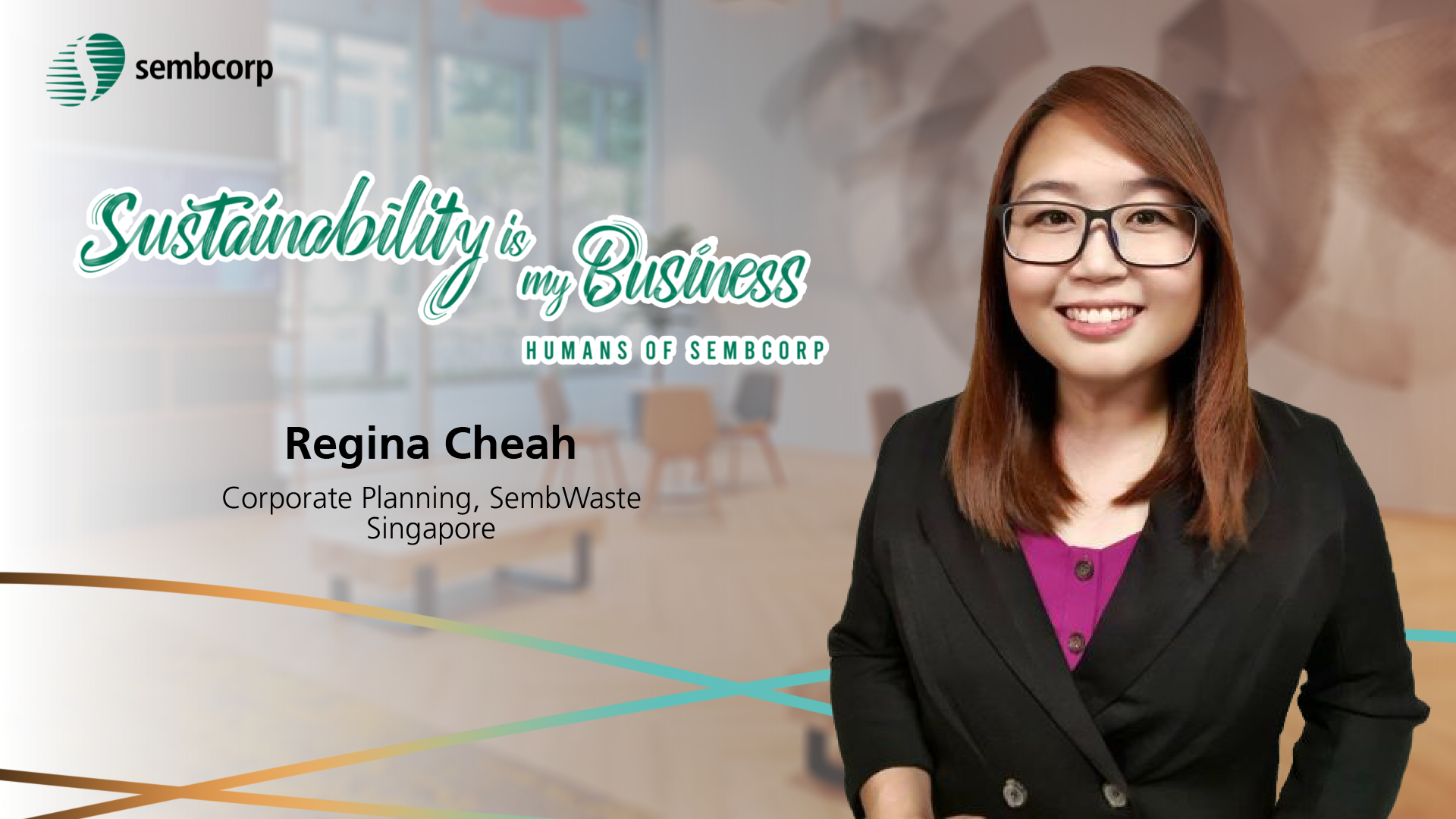
1. Tell us more about yourself.
Hi, I am Regina and I am based in Singapore. I have been part of Sembcorp’s solid waste management arm, SembWaste for seven years. In Singapore, SembWaste provides waste management services to 440,000 households and more than 3000 corporate customers. Our Materials Recovery Facility processes about 70,000 to 90,000 tonnes of materials for recycling every year!
While a key part of what we do is to ensure that our operations run smoothy, our work goes beyond that. My role allows me to explore and leverage new technologies to improve our operations and see how we can use waste to better manage our carbon footprint. I also look at how we can strengthen partnerships with our various stakeholders, including technology partners, government agencies and non-governmental organisations.

2. How is waste management linked to sustainability?
By reducing and recycling our waste right, we can reduce our overall consumption of raw materials required to make new products, as well as prolonging the lifespan of Singapore’s only landfill. For many of our customers, such as hotels, hospitals and shopping malls, a key step forward is to understand the composition of their waste. With this information, we can tailor the right abatement programmes to help them better manage their waste.
We also believe that education is important. Through initiatives such as the ‘ezi’ mobile application, we aim to educate and encourage customers and the general public to adopt clean-stream recycling (separating recyclables into different bins) over commingled recycling (mixing of all recyclables). This will significantly reduce the amount of recyclables that will be contaminated or rejected, from 50 to 60% to less than 5%!

For me, it is encouraging to see people and organisations trying to be more sustainable and going out of their comfort zones to do more for the environment. This inspires me to work harder, seek ways to elevate our frontline colleagues’ day-to-day work and help people to recycle better.
3. How do you incorporate sustainability into your own life?
I always believe that we can do more when it comes to sustainability. At home, my family participates in a food rescue initiative; we collect food which may be close to expiry or deemed too “ugly” to be sold from various restaurants, pastry stalls and supermarkets. We then redistribute the food to people who want or need them daily. I am extremely surprised by the sheer amount of food we could salvage. In fact, I learnt that food waste accounts to about 12% of our total waste generated in Singapore!

If you are thinking of doing more when it comes to recycling, remember that starting small is better than not starting at all. By hooking a bag at home and making a note to put only recyclables in it, you have already established your recycling point. A rule of thumb for recycling is to ensure that the items are made from a single material (e.g. plastic, glass, metal). For other items, such as toys and umbrellas which are made from multiple materials, always look at repurposing or reusing them before throwing them away.
